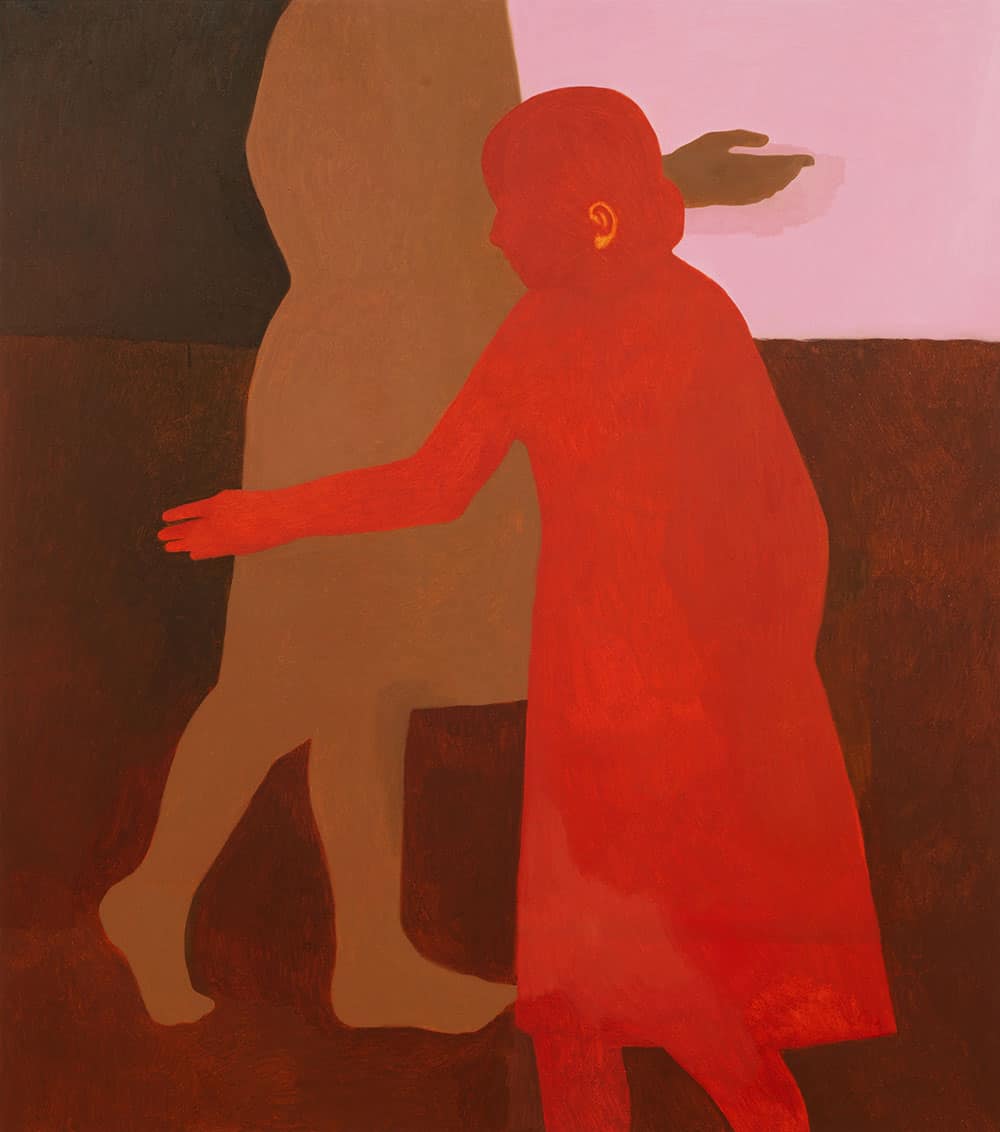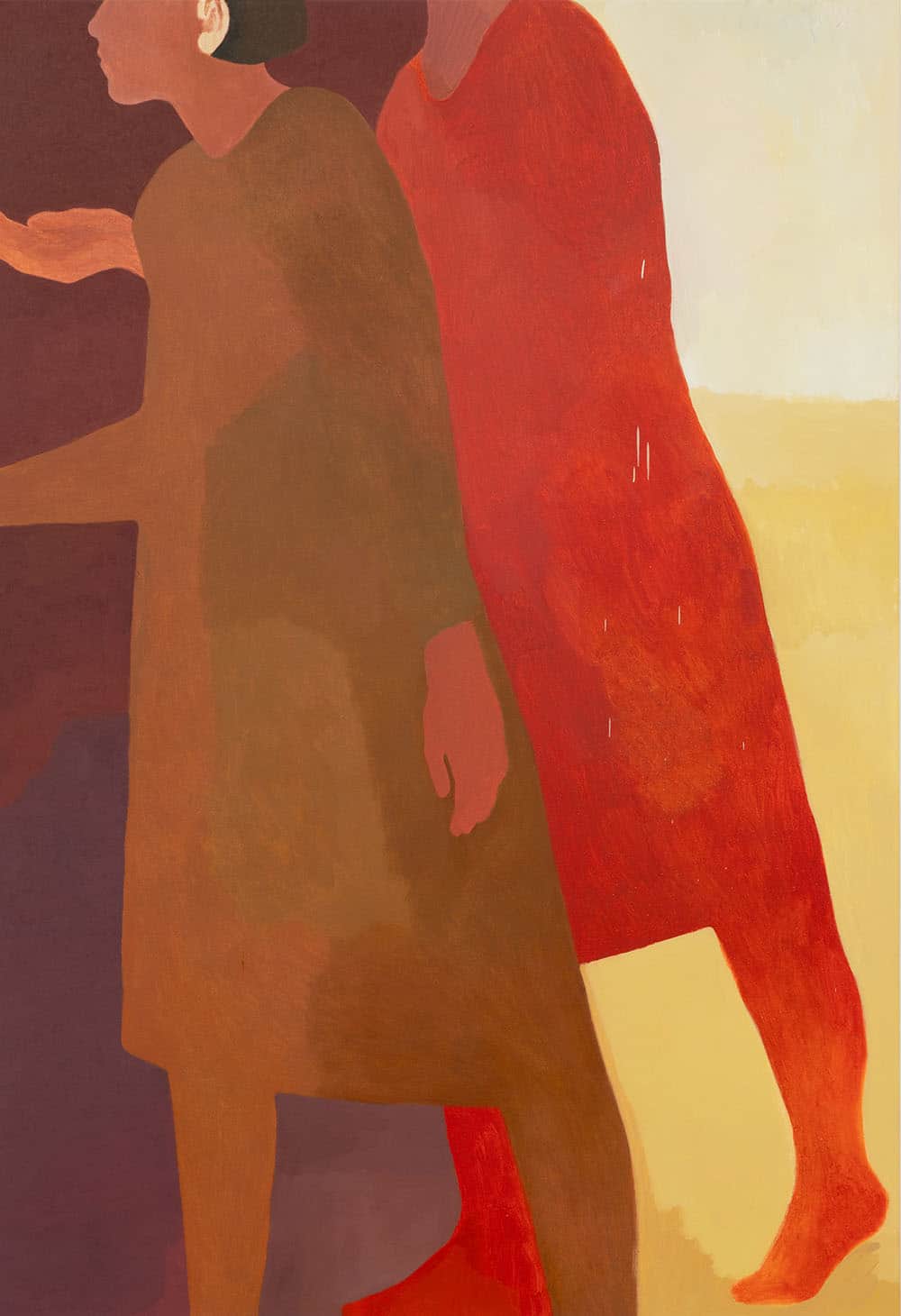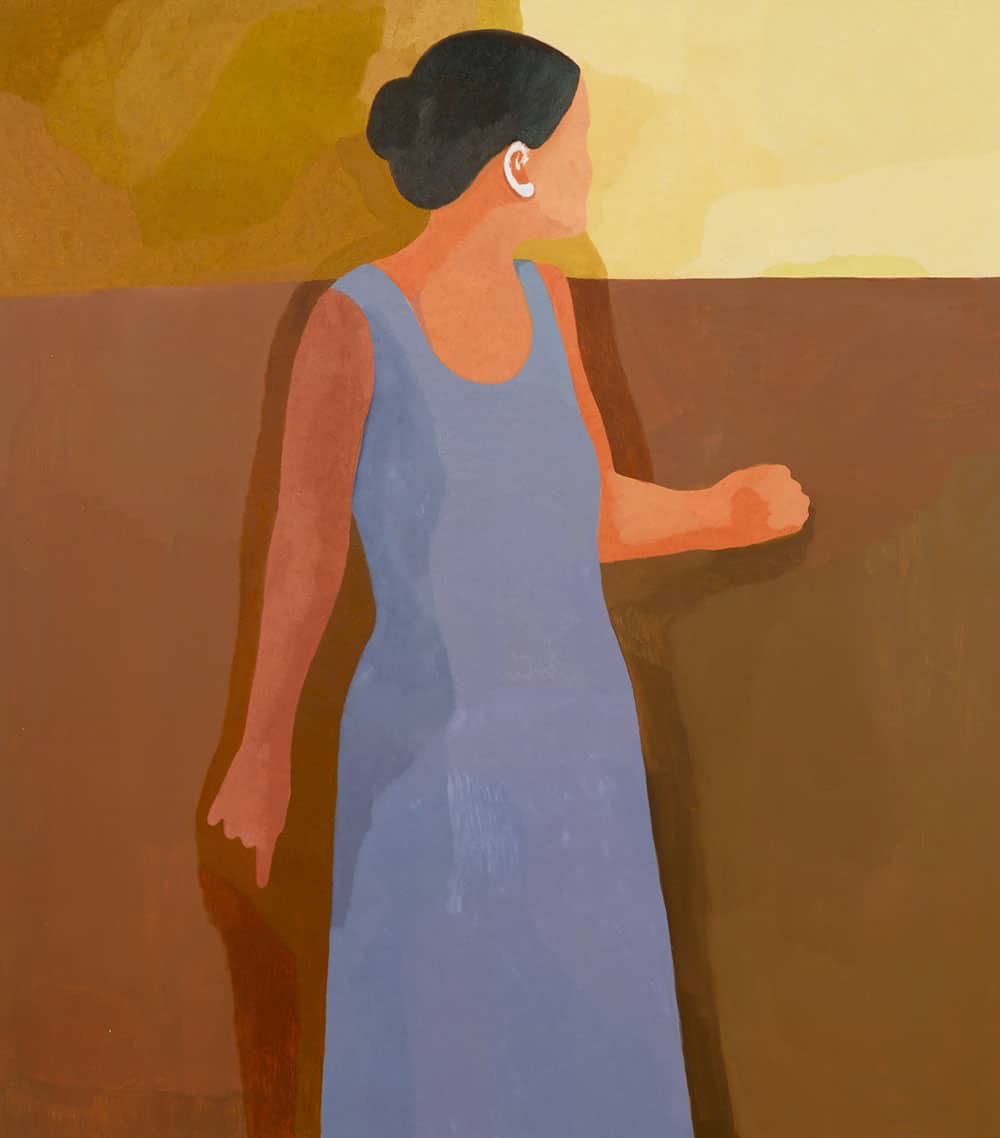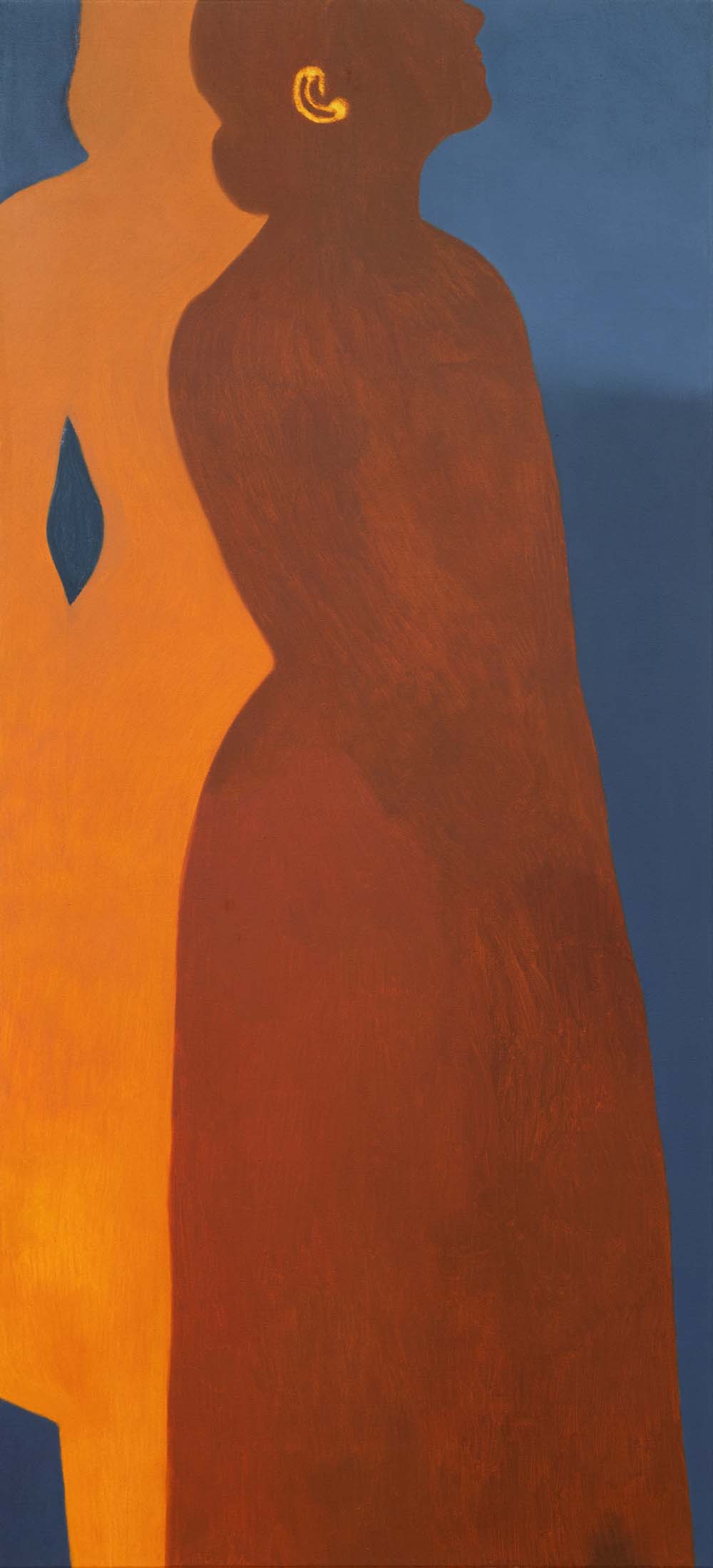
Catherine Repko, shadowcasters, 2025
Duets is a space which prepares you for transition, a narthex, concerning both the past and the future. The images which adorn these walls function like the art decorating the sacred spaces of the Italian Renaissance or Ancient Egypt; an earthy palette silhouetting figures against abstract backgrounds, the gestures and intentions of these impersonal characters guide the spirit to an inner sanctum, some seat of spiritual significance where the past transforms into a vast and unknowable future.
And this questioning of time comes first from a questioning of memory, a notion which Catherine Repko grapples with in these works. By painting scenes from home videos and family photographs recording her early life with her sisters, the artist descends into her past in search of a truth concerning her experience as a woman raised by, and amongst, women. Repko spent her formative years in Florence, recalled through her ferruginous reds and inky blue palette and the classicising posing of her figures, referencing in particular the frescoes of Masaccio or Domenico Ghirlandaio; and something of the sanctity of those chapels appears to have seeped into her subconscious, too.

Catherine Repko, the greatest guide, 2025
However, the artist seeks a totality within her depictions of women and girls. She relieves those familiar figures of their features, and reduces the environment to blocks of colour, until sororality is distilled to an essence; an allegory of sisterhood pulled from memory, a delicate balance between deeply personal and deeply impersonal, a blend of mythology and her own real experience.
But there are elements of tension in Duets. Figures do not interact with one another in this body of work as they might have done in previous paintings by Repko. Their gazes are often absorbed in something beyond the frame, something to which they occasionally gesture. Characters arrive and depart, and sometimes meld with their duet partner while remaining seemingly oblivious to their presence, as in early light. A fragility, then, within the communities populating these compositions. As they both temporally and spatially progress, regress, and fluctuate, they perhaps represent her flickering, transient recollections of her childhood as those memories exist today: distant yet present, silhouetted and vestigial, and simultaneously irrecoverable, but immured in paint.

Catherine Repko, early light, 2025
Past, present, and future, therefore, exist together with some disquiet. The tenses combine into one ineffable conjugation, which is the crux of the exhibition. These guiding figures motion us onwards, induce us into our own transition and flux, and implore us to delve into our own memory. Two figures, their backs touching, begin to separate and move beyond the space within composition, in a painting poignantly named daughter. Similarly, the women depicted in mystic gaze in opposite directions on different planes, unaware of one another, constructed within one elegant, elongated relief-like painting. In a divinity, a celestial figure, aside her no less seraphic partner, gestures to an unseen presence, perhaps moving towards it, tenderly offering an oblation. And after one follows this proustian procession through the various vaults of thought, self-examination, and reverie, one arrives at a quiet, dim room, containing three works; umbra and constellations at each wing, and one central work, amid the plains. This solemn ensemble creates a pseudo chapel, a sepulchre, not unlike those chapels of Florence. It’s an apt denouement for an exhibition dedicated to spiritual guidance and progression.

Catherine Repko, a divinity, 2025
While amid the plains is anomalous among the other works in Duets for its only containing one figure, it nevertheless expresses the same sentiments. In a barren plain, a solitary woman turns to look over her shoulder in a contraposto. Her face is directed towards the horizon, and the sky where her gaze falls is resplendent with aureal light, contrasting with the dark sky to the left. Though she looks back onto memory, represented by the patchwork of gold and Stygian red, she moves forward—as if guided by the contemplation of both the vespertinal melancholy and splendour of her own history. Enrapt in a shadow which softly clings to her outline, we might understand her as being protected and comforted by this remembrance.

Catherine Repko, amid the plains, 2025
Such is the purpose of this space of transition, this narthex; as in the art of Ancient Egypt, we, or rather our spirits, are prepared for the future through the recordance of things past. As Repko contemplates her life, her womanhood, as it has been and as it will be, we are invited to do so as well, following the example of her women, as though they were frescoed saints; women who, although robed in anonymity, remain recognisable, in possession of a spiritual familiarity and emotional significance. Each image is a prayer, an invocation of memory and a grasp at the irrecoverable; they’re mystical events, in which memory impels, comforts, and guides us forward.
(By Arlo Brown)
